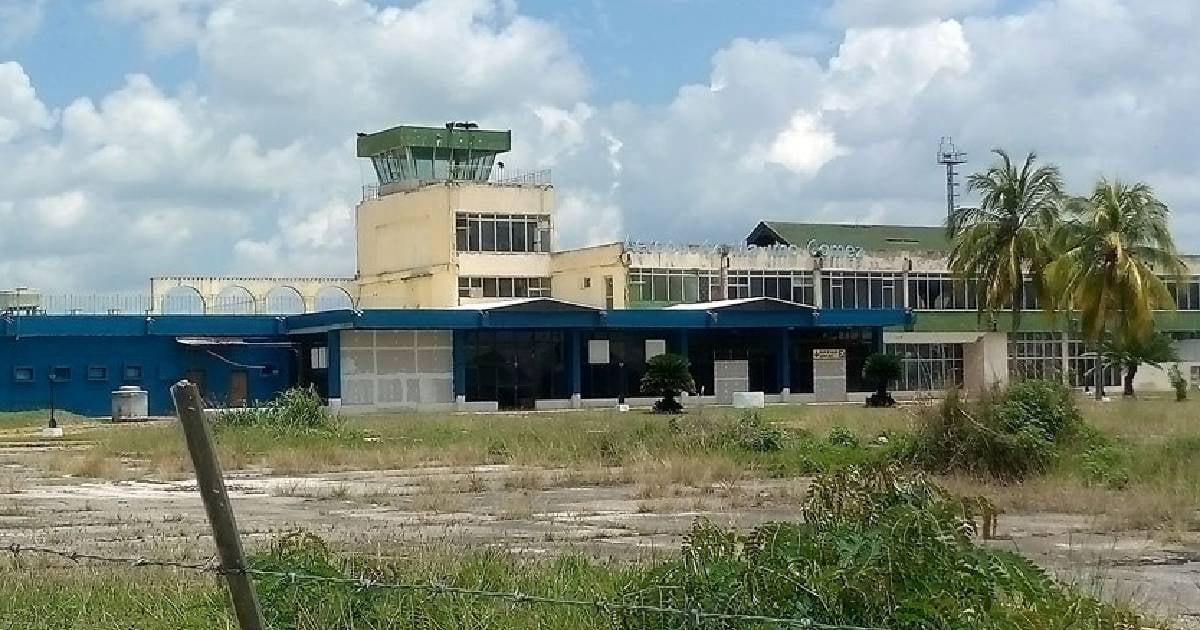Once bustling with aircraft, the Máximo Gómez Airport in Ciego de Ávila now serves as grazing grounds for cattle. Constructed at a cost exceeding 100 million pesos, this facility stands as a stark reminder of a Cuba where infrastructure crumbles under bureaucratic paralysis rather than obsolescence. Over two decades since its last commercial flight, the airport lies in ruins with no legitimate revival or repurposing initiatives in sight, while the nation continues "planning until 2030" without addressing past failures.
Since the late 2002 opening of the Jardines del Rey International Airport in the tourist hub of Cayo Coco, the Máximo Gómez Airport—located just 20 kilometers from the provincial capital—lost its primary function as a transit point to the northern keys. Domestic flights to and from Havana and Varadero ceased, leaving the airport devoid of regular commercial traffic, as reported by the state-run newspaper Invasor.
Today, the scene verges on the surreal: collapsed roofs, parking lots overrun with weeds, a defunct restaurant, and baggage carts rusting like relics in a museum of failure. While the platform and taxiway aren't entirely lost, they exhibit alarming decay. The runways are overgrown with marabú, and the facilities reduced to skeletal remains. Only vultures circle the control tower, and cows graze where planes once rolled.
"It paints a picture of solitude and decay... The airport terminal teeters between existence and non-existence, between silence and dread," lamented the newspaper. Over the past 20 years, no rescue programs or initiatives have emerged to preserve a site built at over 100 million pesos, including a significant foreign currency component.
While acknowledging the substantial costs of revitalization, the report suggests that "developing alternative projects would be the most sensible approach to prevent the complete destruction of what cost so much effort and resources." Invasor noted the absence of recovery plans in the National Economic and Social Development Plan through 2030, or any mention by the Ministry of Transport regarding "Máximo Gómez." State priorities focus on "Varadero, Santa Clara, and Cayo Las Brujas, along with maintenance and repair workshops, among other facilities, given that the country has 22 airports, 10 of which are international." Infrastructure that doesn't serve tourist hubs or the regime's narrative seems disregarded.
According to the publication, the site could be repurposed for alternative uses, such as a venue for sports events, a center for skydiving, or tracks for karting, motorcycles, and even automobiles, as seen with other abandoned airports worldwide.
"The illogical path is to let it remain as it is, ensnared by neglect and institutional inertia. The logical path? Allow local projects, or others, utilizing existing runways and structures to generate income and jobs, as a significant investment lies dormant there," advocated the article.
The state of the Ciego de Ávila airport exemplifies how public value is destroyed in Cuba—not through natural disasters but due to negligence, apathy, and misguided policies that doom infrastructure to abandonment. In a nation where housing is scarce, transportation is failing, and the economy is unstable, keeping an airport closed and purposeless is not an exception but a reflection of the country's condition.
Similarly, in Ciego de Ávila, the budget exceeding 100 million pesos for the comprehensive repair of the Morón Railway Terminal highlights how infrastructure projects deteriorate and incur excess costs due to improvisation and lack of effective public resource control.
In Havana, numerous buildings crumble under the relentless passage of time, compounded by neglect and institutional abandonment. The lack of resources prevents Cubans from restoring their structures, and the State offers no viable alternatives.
The once-iconic Teatro Musical de La Habana, a former cultural epicenter, now languishes in total disrepair, reduced to a dumping ground in Centro Habana. Similarly, the old Hotel Venus in Santiago de Cuba stands in ruins, a landfill reflecting the neglect of architectural infrastructure in the city.
Amidst the destruction of Cuba's urban heritage, unchecked hotel investment underscores a symptom of the country's widespread crisis.
Understanding the Decline of Cuban Infrastructure
Why has the Máximo Gómez Airport in Ciego de Ávila fallen into disrepair?
The Máximo Gómez Airport has deteriorated due to a lack of maintenance, bureaucratic neglect, and the absence of revitalization projects, resulting in its current state of abandonment.
What alternate uses could the abandoned airport site serve?
The site could be repurposed for sports events, skydiving, or as tracks for karting, motorcycles, and automobiles, similar to other repurposed airports worldwide.
How does the abandonment of infrastructure reflect on Cuba's broader challenges?
The neglect of infrastructure like the Máximo Gómez Airport mirrors Cuba's broader issues of bureaucratic inefficiency, economic instability, and misplaced priorities that hinder national development.
